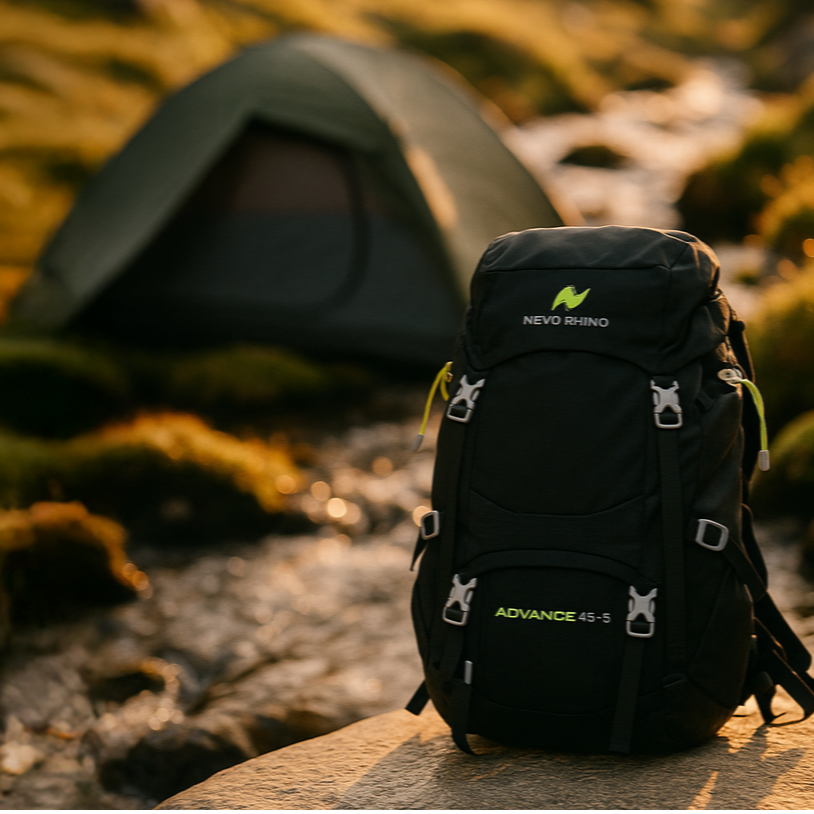
Leave No Trace for Beginners: How to Camp Without Harming Nature
Share
The wild gives us so much: silence, beauty, challenge, clarity. But every time we go out, we leave a mark. The question is what kind of mark?
Whether you’re camping for the first time or just starting to explore the outdoors, learning the Leave No Trace (LNT) principles is the foundation of ethical camping. It’s not about being perfect, It’s about being mindful.
In this guide, you’ll learn how to protect the places you explore, minimize your impact, and camp in a way that respects both nature and others.
What Does “Leave No Trace” Actually Mean?
“Leave No Trace” is a set of outdoor ethics developed to help people reduce their environmental impact when spending time in nature. It’s used by national parks, scouts, survivalists, and experienced hikers all over the world.
At its core, it means: enjoy nature without destroying it.
There are 7 principles, and they’re surprisingly simple — but powerful when practiced consistently.
1. Plan Ahead and Prepare
Good decisions start before you even leave the house.
- Know the rules and regulations of your campsite or trail
- Check the weather forecast and pack appropriately
- Bring maps, emergency gear, and the right food
- Avoid high-traffic times if possible
Why it matters: Poor planning leads to shortcutting trails, building illegal fires, or leaving trash behind.
2. Travel and Camp on Durable Surfaces
Where you walk and camp matters.
- Stay on marked trails
- Camp on gravel, rock, dry grass, or packed dirt - not soft vegetation
- Don’t trample wildflowers or make your own path
Avoid creating “social trails” side paths from people going off-trail. They cause erosion and habitat loss.
3. Dispose of Waste Properly
The golden rule: Pack it in, pack it out.
- Carry out all trash, food scraps, and hygiene items
- Use toilets when available; otherwise, dig a cat hole (6–8 inches deep, 200 feet from water)
- Don’t bury trash - animals will dig it up
Pro Tip: Carry a ziplock trash bag for wrappers, tissues, and small scraps. Easy to stash, easy to carry out.
4. Leave What You Find
Take photos, not souvenirs.
- Don’t pick wildflowers, take rocks, or carve into trees
- Leave campsites better than you found them
- Avoid disturbing natural structures like logs or animal homes
Even moving a rock can disrupt tiny ecosystems you can’t see.
5. Minimize Campfire Impact
Campfires can scar the land if not done right.
If you build one:
- Use existing fire rings
- Burn only small, dead, local wood
- Put out the fire completely - cold to the touch
- Never burn trash
Survival Tip: Use a lightweight stove for cooking — it’s safer, cleaner, and leaves no trace.
6. Respect Wildlife
You're a guest in their home.
- Observe from a distance
- Never feed animals - it makes them aggressive and unhealthy
- Store food securely, especially in bear country
- Keep pets under control, if allowed at all
Even crumbs can change animal behavior in ways that ripple through the ecosystem.
7. Be Considerate of Others
Nature is for everyone.
- Keep voices and music low
- Yield on trails (uphill hikers have right of way)
- Don’t set up camp right next to others if space allows
- Respect privacy, silence, and the shared experience
You’re not just sharing the outdoors with animals, you’re sharing it with other people, too.
Why It Matters for New Campers
If you’re new to camping, this is where your outdoor mindset begins. The Leave No Trace principles aren’t about rules, they’re about honor. Honor for the land, for the people who come after you, and for the privilege of being out there at all.
The 7th Step Philosophy: Go Further Without Leaving a Scar
The 7th Step Starter Kit is built to help you enjoy the wild responsibly, with compact, reusable gear, an efficient stove, and a no-fuss setup that leaves less behind.
✅ No plastic forks
✅ No wasteful packaging
✅ No fire damage just to boil water
We believe the first step into nature should be light — on your back and on the land.
→ Get Your Starter Kit
Walk in. Breathe deep. Leave no trace.












